The basics of diagnosing greenhouse floriculture problems
Whether you are a new or an experienced grower, having a formal diagnosis process to follow may help solve plant issues.
There is no one perfect way to diagnose plant problems in the greenhouse, but having some well-defined method may help. One such method is presented below (Table 1). The very first step in achieving a diagnosis is to define the problem by describing the abnormality and confirming it is indeed an abnormality. Occasionally a “plant problem” is presented to MSU’s plant diagnostic clinic (MSU Diagnostic Services) that turns out to be just how that new variety is supposed to look. For example, in Image 2, these salvia plants may look like they have a problem to some growers because of the white splotches all over the leaves. But this is a new variety that was bred to be variegated like this.
Table 1. A diagnostic process model.
|
Step |
Description |
Comments |
|
1. Define Problem |
Describe the problem |
Is it truly a problem or supposed to look like that (a new variety)? |
|
2. Look for patterns
|
Look for patterns in the plant community and on the plant itself. Are the patterns random (likely a biotic problem) or uniform (likely an abiotic problem)? |
Biotic problems are caused by living organisms such as a pest/disease. Abiotic problems are caused by non-living sources such as environment, nutrition, chemicals, etc. |
|
3. Gather information
|
Scout for insects/diseases. Examine plants closely, including underside of leafs and roots. Examine sticky cards nearby for evidence of flying insects. |
Consider nutrition as a potential issue. What is the substrate pH and EC? |
|
4. Diagnose
|
Consult helps (extension, books, etc). Consider all the possibilities from sources and others experiences. Eliminate options that aren’t likely. |
Prove or disprove your diagnosis via testing (tissue analysis, water analysis, or substrate nutrient analysis, etc.) |
|
5. Take Action
|
Fix the problem based on previous experience, extension recommendations, book recommendations, etc. |
Record what you did to fix it, so that you can make sure it worked and for your own future reference if the problem should occur again. |
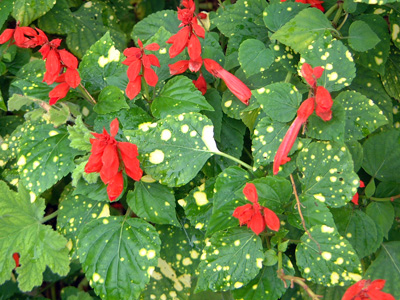
Image 2. Variegated salvia that was bred to have white
splotches on leaves that some may view as a plant
abnormality if not aware of this new variety.
Photo credit: Erik Runkle, Michigan State University.
The next step is to look for patterns both in the plant community itself (in the flat or on the bench or in the range) and on the plant itself. Problems with a random distribution are usually a biotic problem, caused by a living organism, such as insects or diseases. For instance, in Image 3A, a planting of vinca is shown where the chlorosis of certain plants is spotty across the community, which was caused by a biotic problem (Pythium).
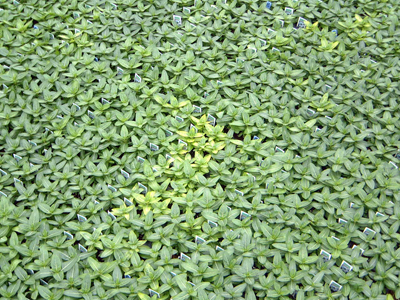
Image 3A. Planting of vinca where the chlorosis of certain
plants is spotty across the community, which was caused
by a biotic problem (Pythium). Photo credit: Erik Runkle, Michigan State University.
In Image 3B, a single geranium leaf exhibits no pattern of the necrotic spots on the leaf and was caused by a biotic problem – aphids.
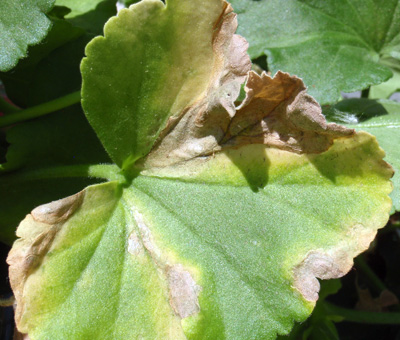
Image 3B. Single geranium leaf with no pattern of the
problem on the leaf, caused by a biotic problem (aphids).
Photo credit: Kristin Getter, Michigan State University.
In contrast, a uniform pattern either within a community of plants or on an individual plant is usually an abiotic problem – a problem not caused by a living organism, such as nutrition, environment, temperature or water availability. For instance, in Image 3C, a poinsettia leaf has a fairly uniform spotting across this single leaf and the issue was caused by an abiotic problem – fungicide phytotoxicity. In Image 3D, a planting of impatiens was uniformly stunted across the bench, which was caused by an abiotic problem, an accidental fungicide overdose.
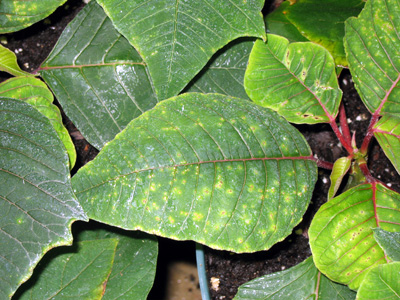
Image 3C. Poinsettia leaf with a fairly uniform issue across
this single leaf caused by an abiotic problem (fungicide
phytotoxicity). Photo credit: Erik Runkle, Michigan State University.
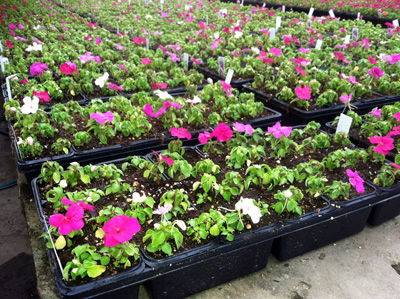
Image 3D. Planting of impatiens that are all stunted
uniformly across the bench and caused by an abiotic
problem (accidental fungicide overdose).
Photo credit: Kristin Getter, Michigan State University.
Once you make note of these patterns, then start gathering information. This includes scouting the crop to look for insects and disease issues. Stop and examine a few plants closely including the underside of leaves and roots. In addition, check the sticky cards near the crops for evidence of flying insects that you may not readily see on the plant. Also gather information about the crops’ history, such as what chemicals were used, environmental conditions or irrigation timing or fertilization that may have changed. If the pattern is very uniform across a whole area, the cause may be nutritional. If nutrition is the suspected problem, first check the substrate pH and EC. If the pH is not appropriate for the crop, some essential nutrients may not be available (or overly available) to the plant. If the EC is too high or too low, the plants may be receiving too much or not enough fertilizer.
In addition, look for where the problem started on the plant (older versus newer leaves of the plant). For instance, in Image 4, this vinca crop shows a problem first with the older leaves that are purpling due to a nutritional phosphorous deficiency.
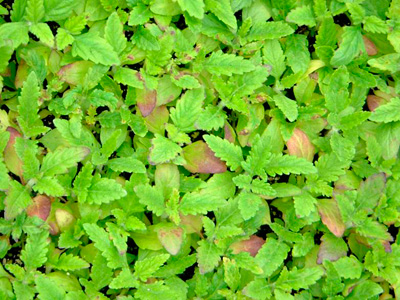
Image 4. Vinca with phosphorous deficiency, showing up
first as a purpling in the older leaves of the crop.
Photo credit: Erik Runkle, Michigan State University
There are many sources to help you identify biotic and abiotic problems, including nutritional issues based on where the symptoms start, including:
- Identifying Nutrient Deficiencies in Ornamental Plants by Amy L. Shober and Geoffrey Denny
- Floriculture Principles and Species book by Dole and Wilkins, published in 2005
- Nutrient Deficiencies in Bedding Plants book by Gibson et al., published in 2007
- Michigan State University Diagnostic Services
- University of Massachusetts Plant Problem Diagnostics
To come to a diagnosis then, Michigan State University Extension advises considering all the possibilities from these and other sources. Eliminate options that aren’t likely and then prove or disprove your diagnosis via testing (tissue analysis, water analysis, substrate nutrient analysis, etc.). Confirming your diagnosis via testing is a very important part of the diagnostic process so that there is confidence that the correct problem is being treated. For instance, if a root rot pathogen is suspected as the problem, but the particular pathogen is never identified, a fungicide treatment may be applied for treatment that is not effective on the real pathogen. In addition, by confirming the diagnosis with testing, future problems can potentially be prevented. Using this same example, a grower would have the record of the confirmed pathogen and next year can potentially treat with an appropriate preventative fungicide or at least be on the look-out for the pathogen early in the year.
Once a probable diagnosis has been determine, it is time to take action. Fix the problem based on previous experience, Extension recommendations, book recommendations, etc. And then record what you did to fix it. Recording the remedy is another important part of the diagnostic process so that you can make sure it worked. For instance, if growers notice an insect problem early on in the season and records the pesticide applied to treat it, they can come back in a few days and scout to see if the problem has indeed gotten better. Having a record of the application will allow the grower to notice that perhaps that insect has developed a resistance to the pesticide or perhaps the grower needs to apply a higher rate of chemical product.



 Print
Print Email
Email




